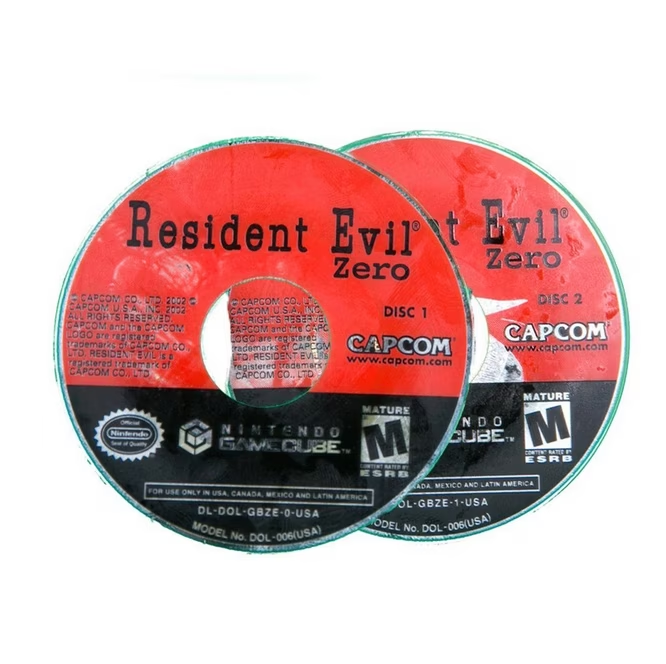
In the shadow of a mysterious viral outbreak, the origins of the Resident Evil saga unfold. Players follow Rebecca Chambers, a rookie S.T.A.R.S. medic, and Billy Coen, a former Marine convict, as they attempt to survive a derailed train infested with monsters and uncover the dark secrets of Umbrella’s experiments that set the stage for the mansion incident.
Developed and published by Capcom, Resident Evil Zero was made under the direction of Koji Oda and produced by Shinji Mikami. Originally released for the Nintendo Gamecube on November 12, 2002. This entry serves as a direct prequel to the original Resident Evil (1996), telling the story of the events that transpired just before the S.T.A.R.S. Bravo Team entered the Spencer Mansion. The narrative follows Rebecca and Billy as they form an uneasy partnership while battling hordes of grotesque creatures. Their journey takes them from the doomed Ecliptic Express train to Umbrella’s training facility, weaving a storyline that fills in key lore gaps.












Gameplay
Resident Evil Zero retains the traditional survival horror formula of fixed camera angles, resource management, and puzzle solving. Its key innovation is the “Partner Zapping System,” allowing players to switch in real-time between Rebecca and Billy, each with unique abilities. Rebecca is proficient with herbs and chemistry but physically weaker, while Billy has higher durability and combat strength. This mechanic eliminates item boxes, requiring players to drop and manage inventory strategically, which was both praised and criticized.
Visuals & Style
Like the GameCube remake of Resident Evil (2002), Resident Evil Zero used pre-rendered backgrounds with real-time 3D character models, resulting in some of the most detailed visuals of its era. The gothic, decaying interiors of the Ecliptic Express and Umbrella’s Training Facility emphasize atmosphere and tension, with dynamic lighting enhancing the sense of dread.
Importance in Survival Horror History
Resident Evil Zero is important for its innovative dual-character mechanic which was a more polished and refined version of Martian Gothic Unification take on character swapping. It’s role as a lore prequel enriched the franchise’s mythos. It expanded the narrative by focusing on Rebecca Chambers and introducing Billy Coen, a character who stood out as morally ambiguous yet sympathetic. While the partner system was divisive, it influenced later co-op design choices in the Resident Evil franchise (notably Resident Evil 5). Its focus on resource scarcity and puzzle-heavy gameplay also marked the last entry in the “classic” Resident Evil formula before the series began shifting toward action-oriented design.
Reception vs Historical Value
At release, Resident Evil Zero received generally positive reviews, praised for its visuals, atmosphere, and faithfulness to survival horror. However, critics were mixed on the removal of item boxes and the sometimes-frustrating inventory system. Historically, the game has gained more appreciation as the last pure traditional Resident Evil before the franchise evolved, making it a time capsule of the classic formula. Its HD remaster allowed modern players to experience it with updated visuals and controls.
Availability & Collectibility



The original GameCube version is considered collectible, with complete copies fetching a notable price due to its limited print run compared to other entries. The Resident Evil 0 HD Remaster is widely available on Steam, PlayStation, Xbox, and Switch, making it accessible for modern audiences.
Buy on Steam: Resident Evil 0 HD Remaster
PSN: Resident Evil 0
Official trailer:
